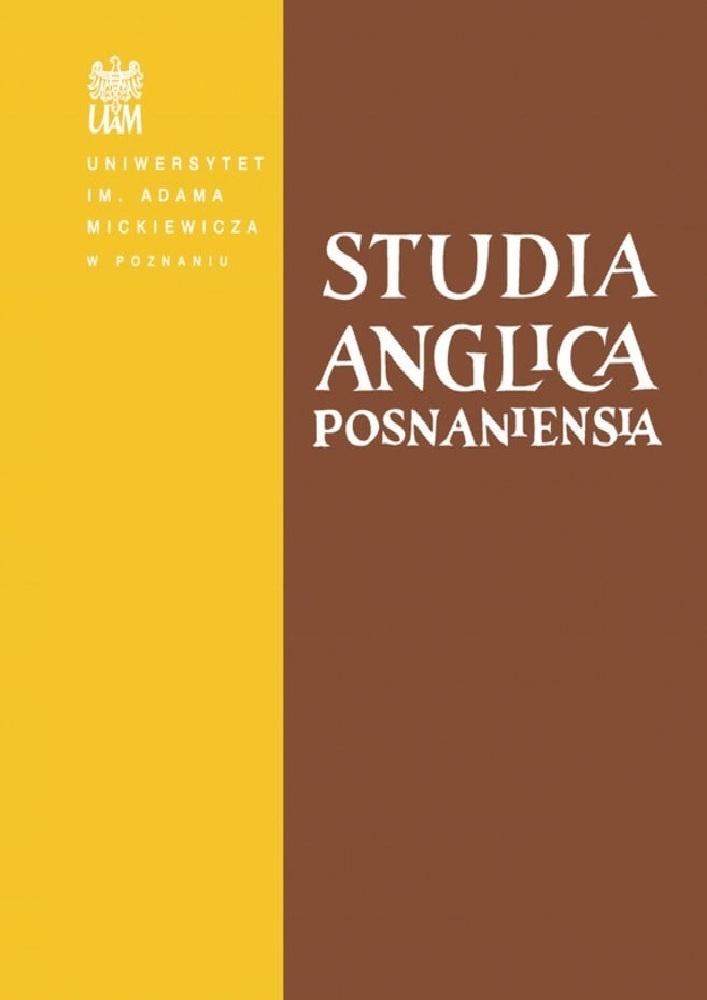Abstract
African American literature on the Middle Passage has always challenged white supremacy’s language with its power to define and control. This article demonstrates how the border of such a “Universal Language” is challenged and trespassed in Clarence Major’s ekphrastic poem “The Slave Trade: View from the Middle Passage” in order to communicate – through the implementation of the voice of a disembodied water spirit Mfu – the black perspective on understanding the slave trade and effectively resist the symbolic cannibalism of Western Culture. The trope of antropophagy often appears in Middle Passage poems in the context of (mis)communication (which results in the production of controlling, racist images of blacks) and stands as a sign of Euro-American power to create the historical, hierarchical, racial reality of the Atlantic slave trade in its economic and symbolic dimensions. The strategy implemented by Major in his poetic confrontation with representation of historical slave trade in European and American Fine arts may be classified as “off-modern” (to use Svetlana Boym’s (2001) nomenclature), which immediately places his poem in a “tradition of critical reflection on the modern condition that incorporates nostalgia” as a means of a critical analysis of the heritage and limitations of a given culture. My claim is that the poem’s “off-modern nostalgia” perspective is a version of textualist strategy which Henry Louis Gates (1988)identifies as Signifyin(g). Major/Mfu successfully perforates and destabilizes the assumed objectivity and neutrality of the images of blacks and blackness created and circulated within the realm of the visual arts of the dominant Western Culture. In “The Slave Trade: View from the Middle Passage” Signifyin(g) takes the form of what could be called an ekphrastic (re)interpretation of actual works of art and joins in the critique of essentialist views often associated with understanding of meaning.References
Alexander, Elizabeth. 2006. American Blue. Selected Poems. Highgreen: Bloodaxe Books.
Baraka, Amiri. 1995. So the King Sold the Farmer. In Paul Vangelisti (ed.), Transbluesency. The Selected Poems of Amiri Baraka/LeRoi Jones (1961–1995), 263–266. New York: Marsilio Publishers.
Hayden, Robert. [1962]. Middle Passage. In Frederick Glaysher (ed.), Collected Poems, 1985, 48–54. New York: Liveright.
Major, Clarence. 1998. The Slave Trade: View from the Middle Passage. In Configurations. New & Selected Poems 1958-1998, 300–319. Port Townsend, WA: Copper Canyon Press.
Sanchez, Sonia. 1995. Wounded in the House of a Friend. Boston: Beacon Press.
Arens, William 1979. The man-eating myth: Anthropology and anthropophagy. New York, NY: Oxford University Press.
Boym, Svetlana. 2001. The future of nostalgia. New York, NY: Basic Books.
Fanon, Frantz. 1967. Black skins, white masks. (Translated by Charles Lam Markmann.) New York, NY: Grove Press.
Frye, Marilyn. 1983. The politics of reality: Essays in feminist theory. Trumansburg, NY: Crossing Press.
Gates, Henry Louis, Jr. 1988. The signifying monkey. A theory of African-American literary criticism. New York, NY & Oxford: Oxford University Press.
Glavey, Brian. 2016. The wallflower avant-garde: Modernism, sexuality, and queer ekphrasis. New York, NY: Oxford University Press.
Hutcheon, Linda. 1994. Irony’s edge: The theory and politics of irony. London & New York, NY: Routledge.
Holloway, Joseph E. & Winifred K. Vass. 1993. The African heritage of American English. Bloomington & Indianapolis, IN: Indiana University Press.
Kammen, Michael. 1991. Mystic chords of memory: The transformation of tradition in American culture. New York, NY: Knopf.
Menil Foundation, The. 1976. The image of the Black in western art. 4. vols. Cambridge, MA: Harvard University Press.
Mitchell, W. J. T. 2012. Seeing through race. Cambridge, MA & London: Harvard University Press.
Morrison, Toni. 1993. Playing in the dark. Whiteness and the literary imagination. New York, NY: Vintage Books.
Porter, Joy. 2012. Land and spirit in native America. Santa Barbara, CA: Praeger.
Selzer, Linda Furgerson. 1998. Reading the painterly text: Clarence Major’s “The Slave Trade: View from the Middle Passage”. African American Review 33(2). 209–229.
Spillers, Hortense J. 2003. Changing the letter: The yokes, the jokes of discourse, or, Mrs. Stowe, Mr. Reed. In Black, white, and in color: Essays on American literature and culture, 176–202. Chicago: The University of Chicago Press.
Werner, Craig. 1986. New democratic vistas: Toward a pluralistic genealogy. In Joe Weixlmann & Chester J. Fontenot (eds.), Belief vs. theory in Black American literary criticism, 47–84. Greenwood, FL: The Penkevill Publishing Company.
Young, Kevin. 2011. Ardency. A chronicle of the Amistad rebels. New York: Alfred A. Knopf.
